Hyundai Santa Cruz: Tire Pressure Monitoring System / TPMS Sensor
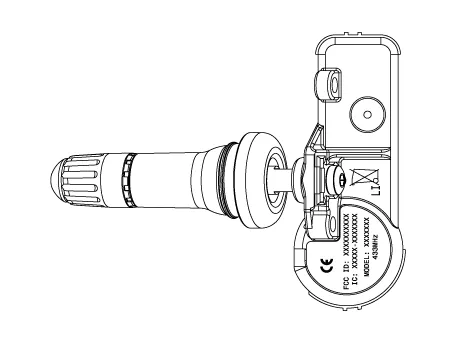
1.Driving stateSensor transmissions occur every 1 minutes and pressure is measured every 15 seconds.
2.Stationary stateSensor transmissions does not occur and pressure is measured every 60 seconds.
3.Auto learning statusWhen driving after stopping more than 15 minutes , sensor transmissions occur every 33 seconds and pressure is measured every 10.8 seconds.
4.Off statusThe TPMS sensor is not operated.Due to stock status, does not measured pressure, temperature, battery status.
5.Alert State :When a 2 psi change in pressure from the last transmission occurs, transmit tire information immediately.The pressure is measured every 2 seconds.
1.Remove the tire. (Refer to Tires/Wheels - "Wheel")
2.Remove the screw with torx driver (A).

• When installing the bead brake, make sure that it does not come in contact with the TPMS sensor.
• Be careful not to damage the TPMS sensor when installing the bead brake near the TPMS sensor.
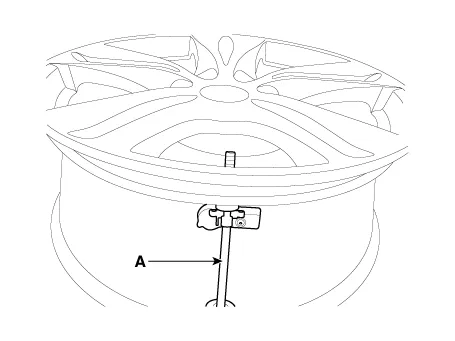
3.Remove the sensor body (A) from the valve (B) in the direction of the arrow.

4.Remove the valve using the valve mounting tool.
(1)Cut the rubber at the bottom of valve with a knife.

(2)Use the valve mounting tool to pull out the valve until it is entirely out of the lower hole.

• Do not reuse the snap-in type TPMS sensor.
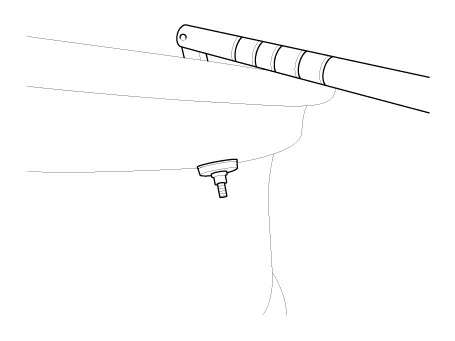
5.Apply lubricant to the surface of the valve, and then mount it through the valve hole of the wheel.

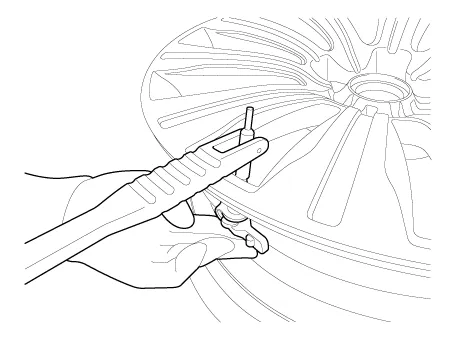

• The TPMS sensor valve bottom is not properly sealed if it is not fully mounted on the wheel, as shown in the following figure:
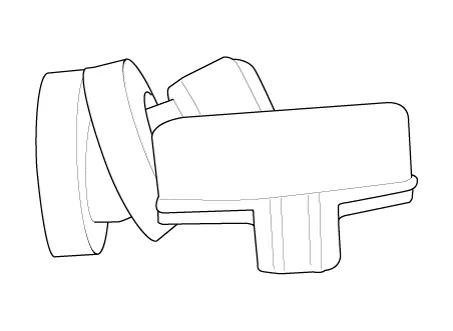
• Make sure that the valve body is pulled entirely through the hole.
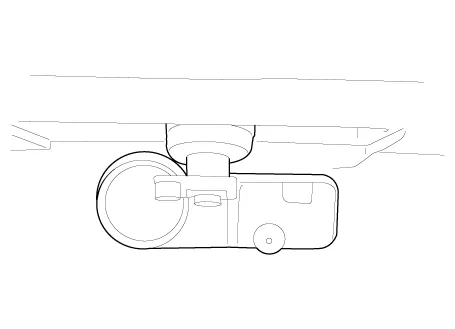
6.Apply soapy water or lubricant to the upper/lower bead section of the tire.
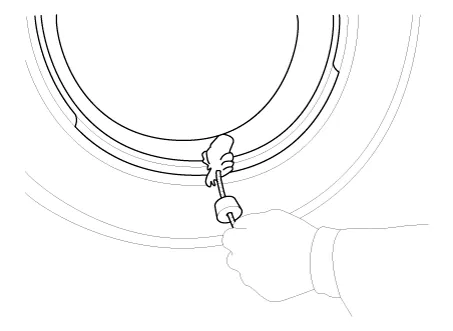
7.In order to mount lower the beads, place the TPMS sensor at 5 o'clock, starting from the head of the tire replacement equipment.
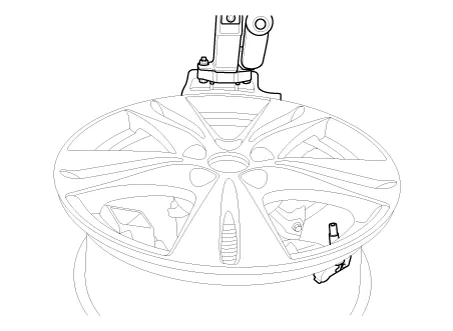
8.Rotate the rim clockwise and press tire towards 3 o'clock to mount the lower beads.

• Mount the tire on the wheel. Make sure that the beads touch the edge of the rim behind the sensor (towards 6 o'clock).
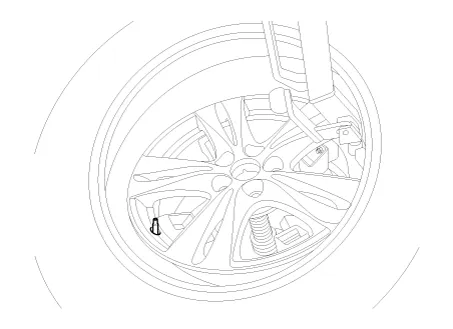
9. In order to mount the upper beads, press the tire towards 3 o'clock and turn the rim clockwise.

10. Inject air into the tire until the beads are in the correct position.
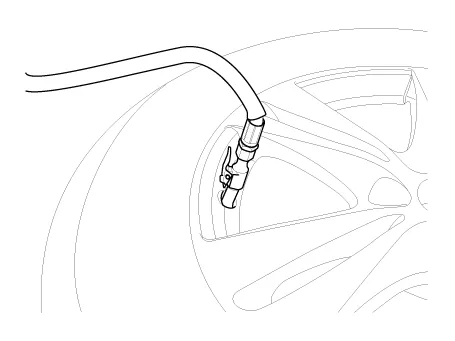
11.Adjust the tire pressure according to the recommended tire pressure for the vehicle.
12.If the TPMS sensor malfunctions, you must perform TPMS sensor learning. Replace any faulty sensors and perform TPMS sensor learning.
1.Connect the diagnostic instrument to the self-diagnostic connector (16-pin) beneath the crash pad on the side of driver's seat, and then turn on the ignition to activate the diagnostic instrument.
2.In the diagnostic tool Vehicle Type Selection menu, select "Vehicle Type" and "TPMS" System, and then opt for "OK."
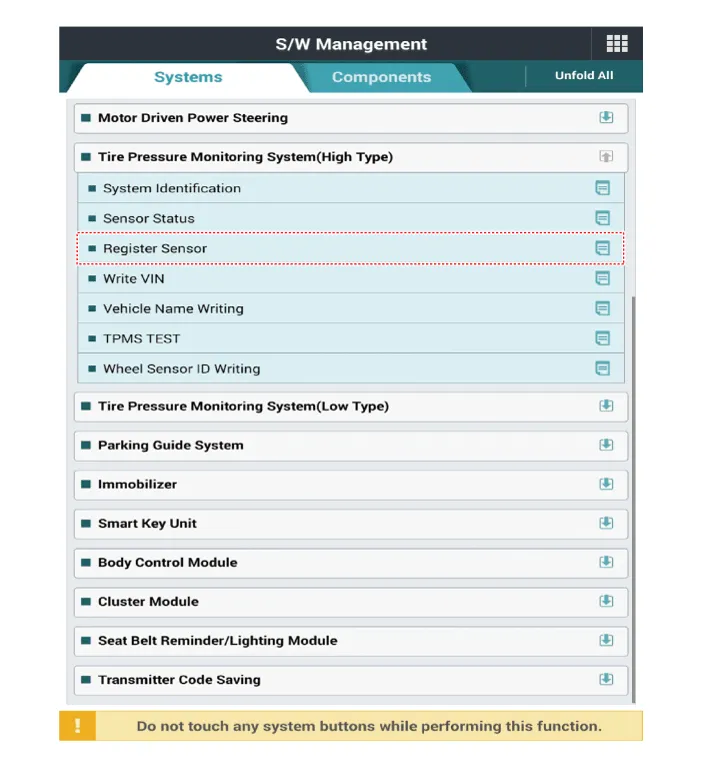
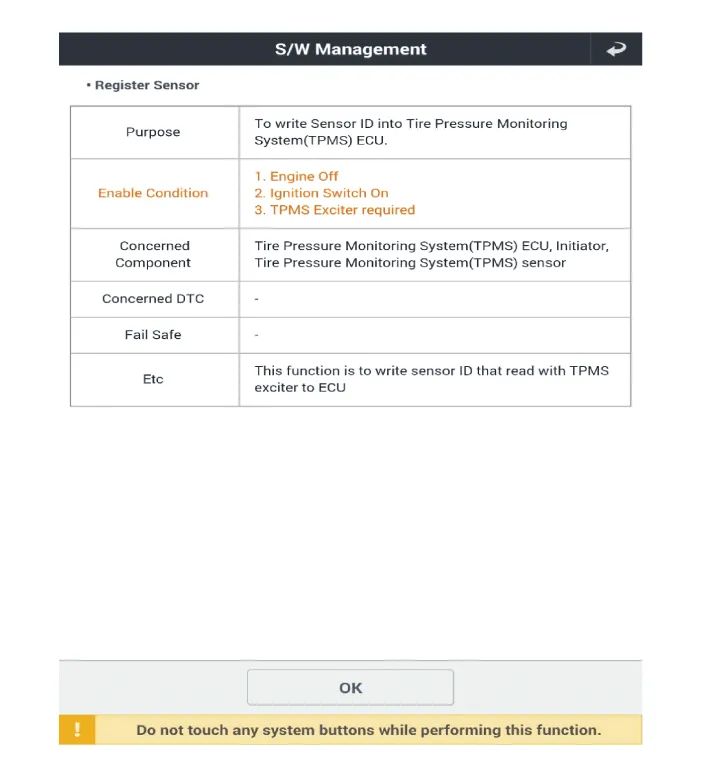
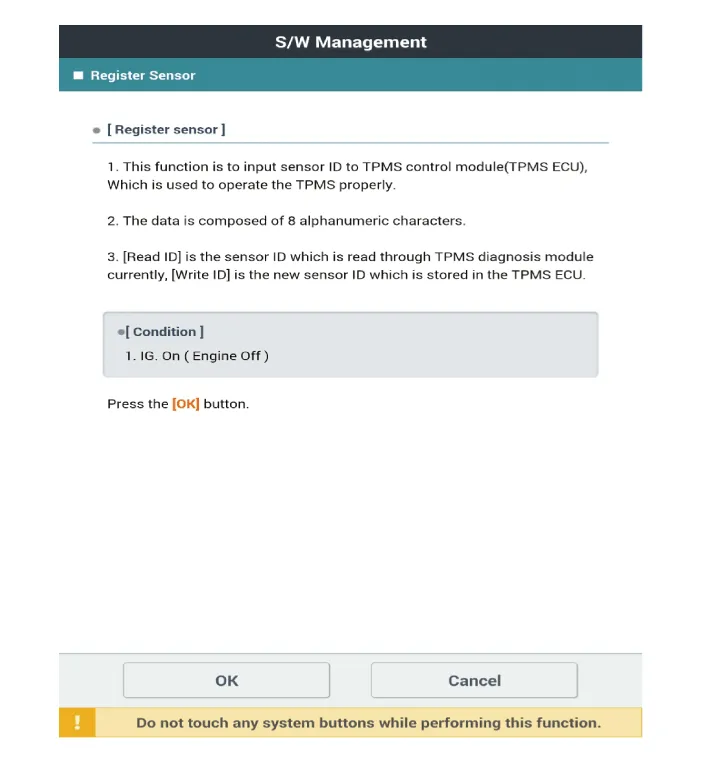

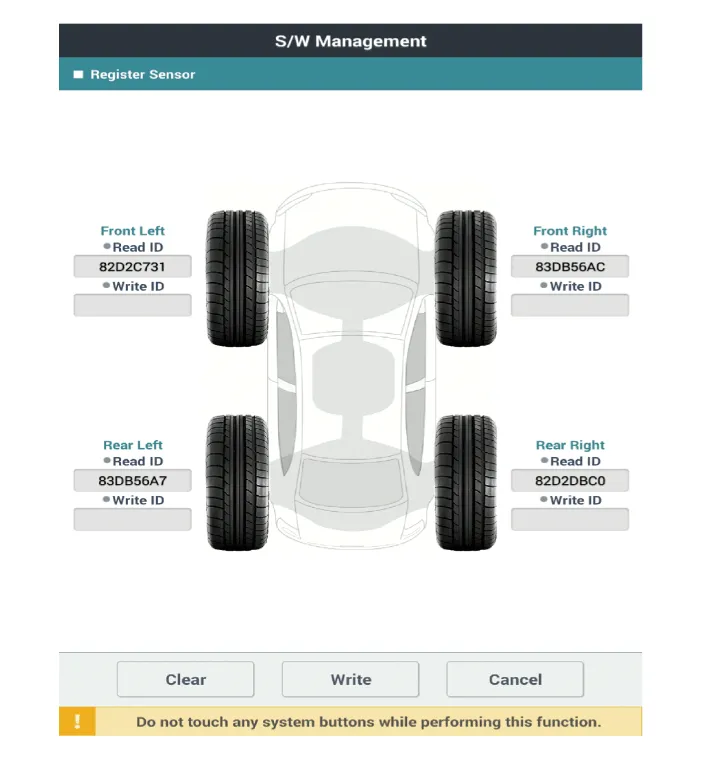
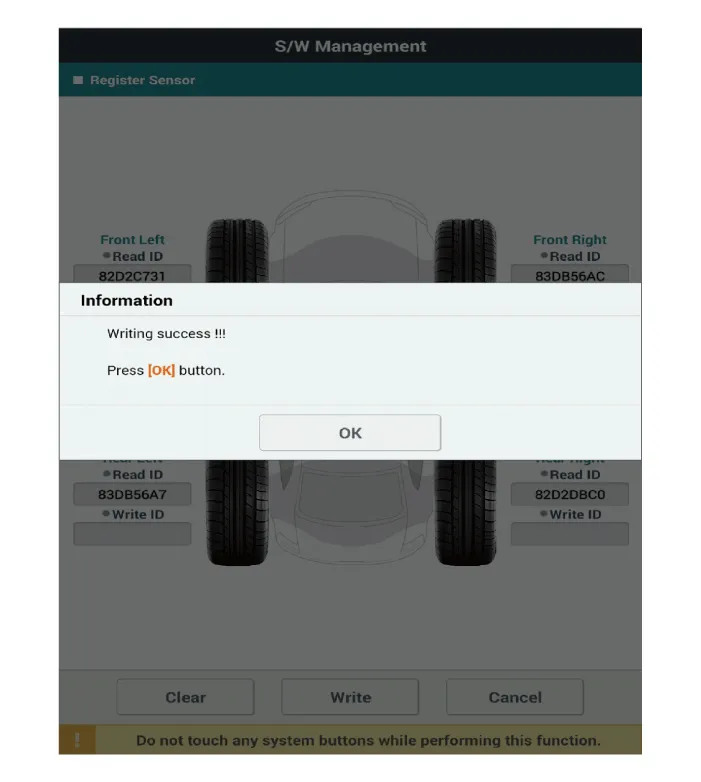

• Check that Write ID and Read ID are the match.
• After successfully registering the sensor, perform "Sensor Wireless Information" to confirm that the sensor operates properly.
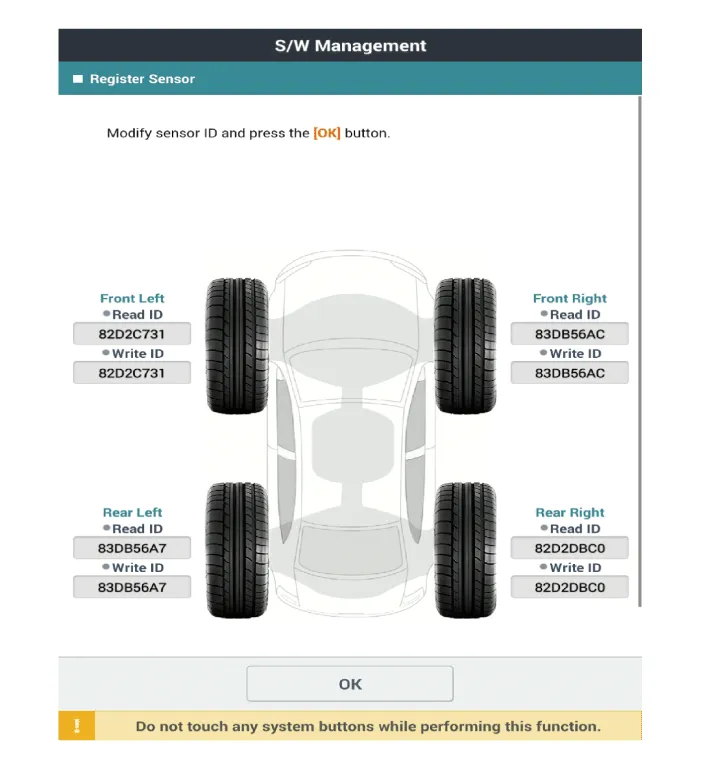
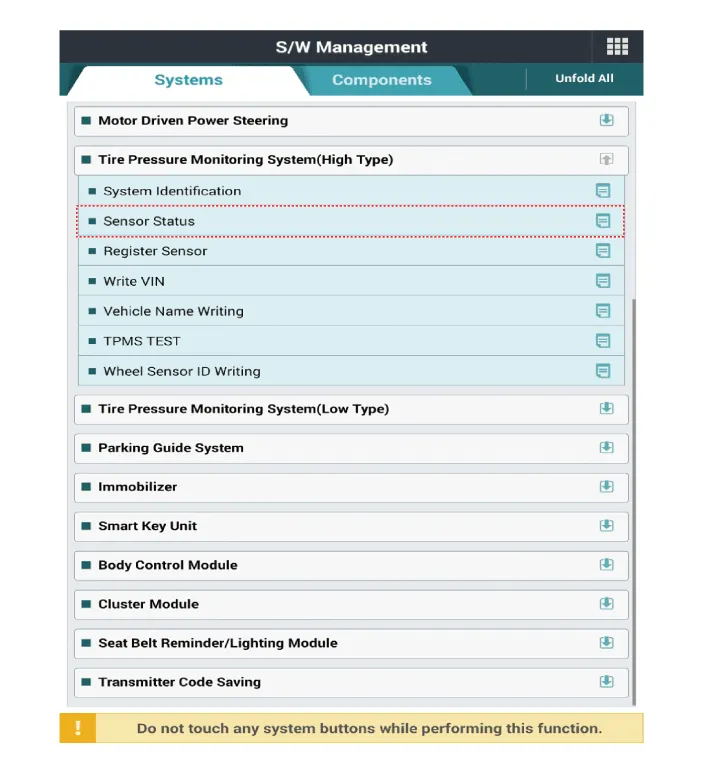
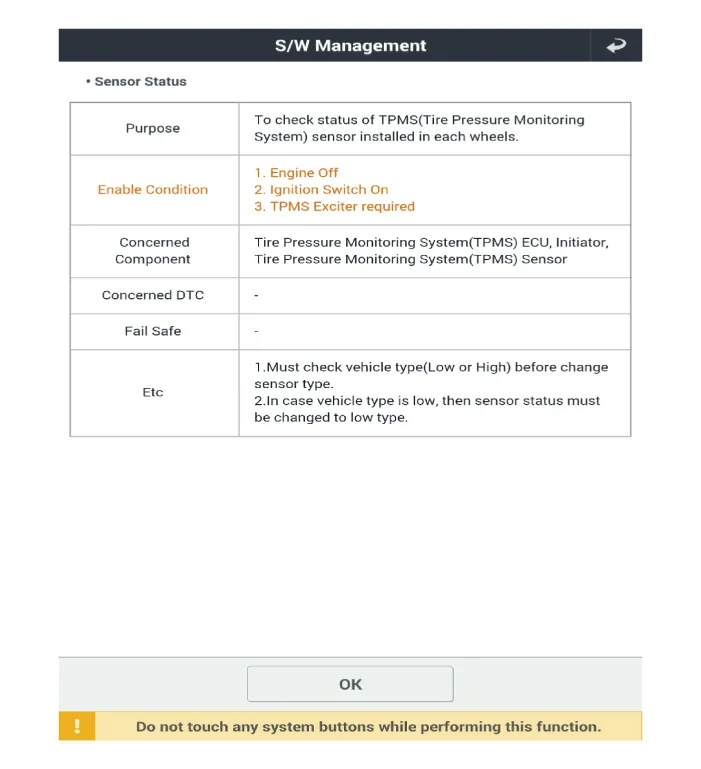
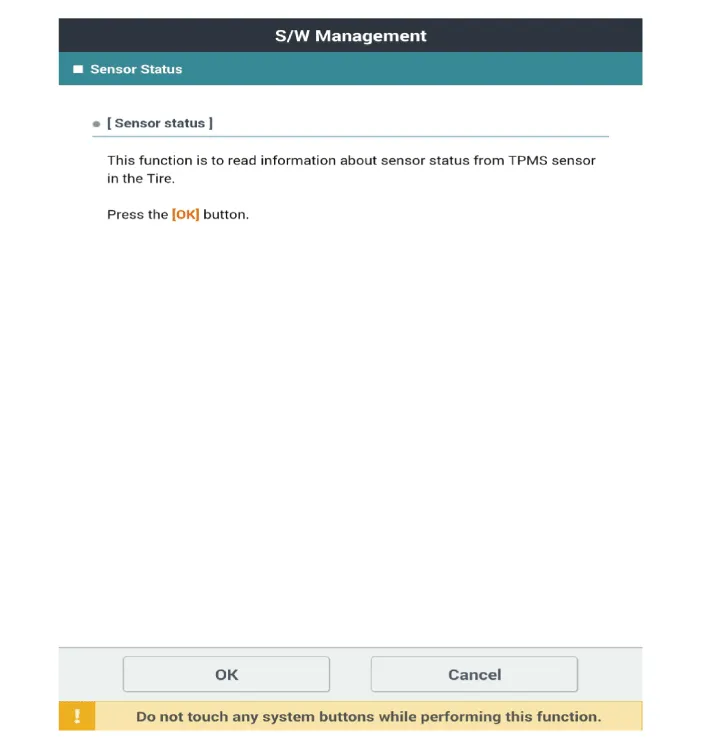

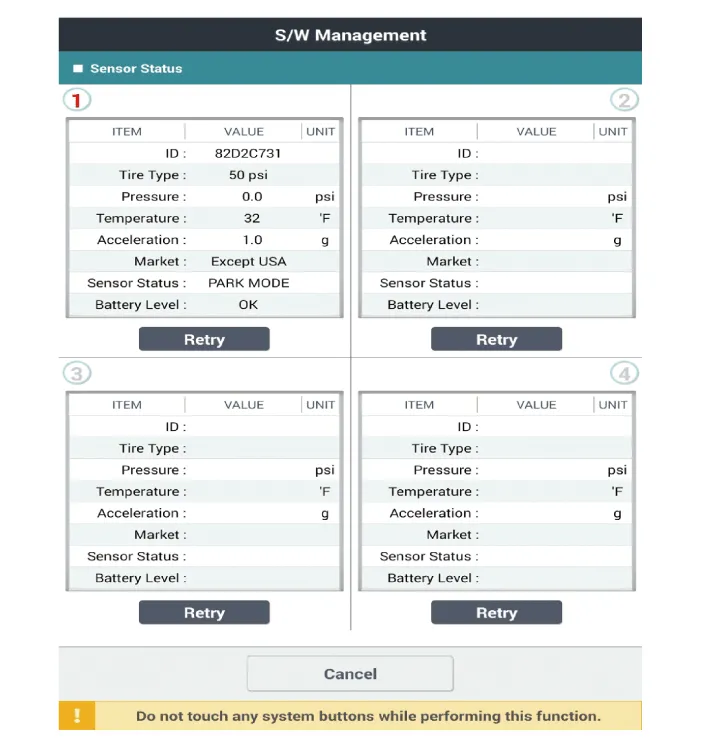

• Each entry must be checked for normal operation of each sensor.
• After replacing the tires or sensors, check for proper operation of sensor after sensor registration process.
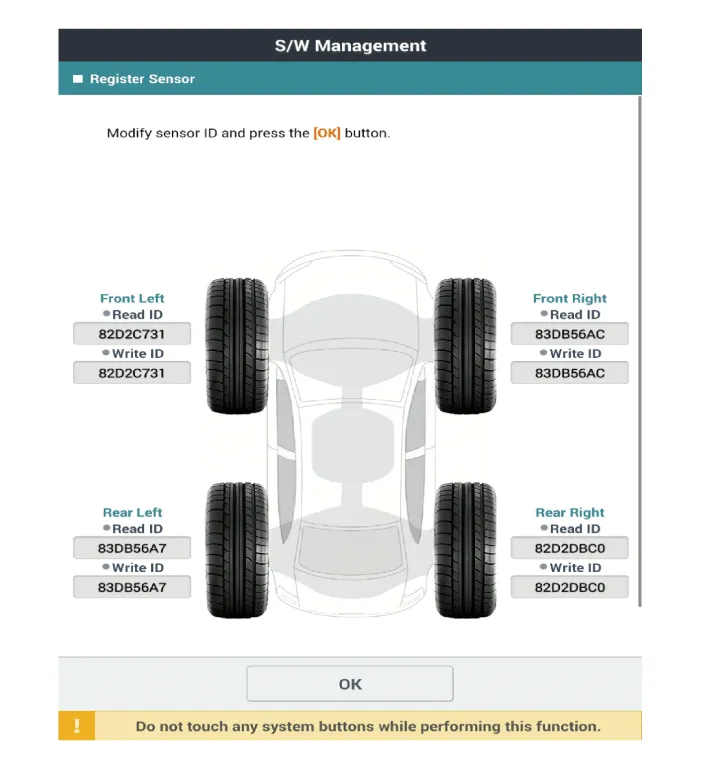
 Components and Components Location
Components and Components Location
- Components Location
1. Receiver2. TPMS Sensor
...
 TPMS Receiver
TPMS Receiver
- Description
TPMS Receiver : BCM(body control module) integrated management
1.Mode(1)Virgin State • The receiver as a sole part is shipped in this state. Replacement parts should therefore ar ...
Other information:
Hyundai Santa Cruz 2021-2025 Owners Manual: Smart Cruise Control (SCC)
Basic function
Smart Cruise Control is designed to
help detect the vehicle ahead and
help maintain the desired speed and
minimum distance between the vehicle
ahead.
Overtaking Acceleration Assist
While Smart Cruise Control is operating,
if the function judges that the driver is
determined to o ...
Hyundai Santa Cruz 2021-2025 Owners Manual: Surround View Monitor
Operation
Operating button
Press the Parking/View button (1) to
turn on Surround View Monitor.
Press the button again to turn off the
function.
Other view modes can be selected
by touching the view icons (2) on the
Surround View Monitor screen.
When one of the infotainment system
button (3) i ...
